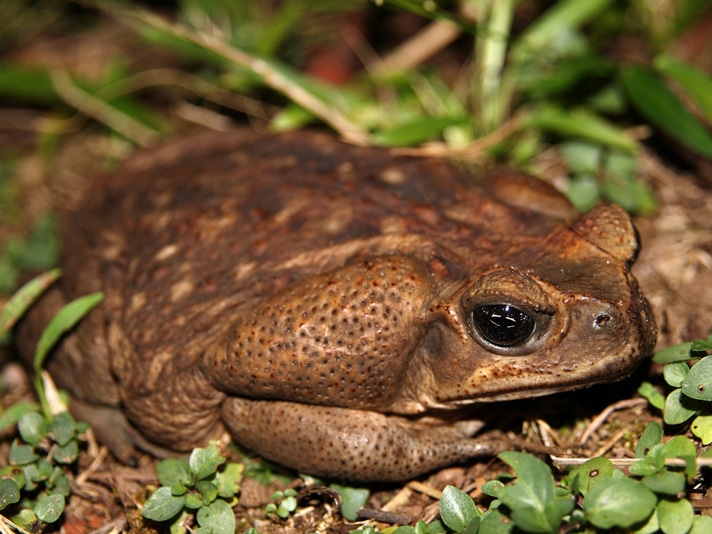Hudson Snake Catching-Gold Coast Snake Catcher in Australia captured some pretty cool footage of a keelback snake feeding on an invasive cane toad (Rh
Hudson Snake Catching-Gold Coast Snake Catcher in Australia captured some pretty cool footage of a keelback snake feeding on an invasive cane toad (Rhinella marina) in the town of Robina. After recording the snake, the snake catcher announced he was going to let the snake finish his meal, but the snake began to regurgitate and expelled the now dead cane toad. It appeared the snake had been trying to eat the toad for a while, as the part of the body that was inside the snake was all gooey, as if the digestive juices had already started to break down the amphibian.
The Australian keelback (Tropidonophis mairii), also known as the common or Mair’s keelback is a nonvenomous colubrid and is also the only known snake in Australia capable of eating the invasive cane toads without ill effect. It is native to Australia, Indonesia, New Guinea, and Papua New Guinea. This species differs from the keelbacks of the Rhabdophis genus, which are native to much of Southeast Asia and Japan. There are about 30 known species of keelback snake in the Rhabdophis genus.
Keelback Snake Information
Certain keelback snakes are venomous and poisonous. The Yamakagashi keelback of Japan, Rhabdophis tigrinus, has venomous saliva and poison in its nuchal glands. The keelback has the capability to store the poison that it ingests from cane toads and other poisonous toads in their salivary glands. They then secrete that poison when they bite, which is harmful to the small rodents that they are also known to prey on.
Cane Toad Information
The now invasive cane toad in Australia, was introduced to control the cane beetle in 1935, but the outcome has been disastrous. The species is now widespread throughout northeast NSW and are nearing the border in north west NSW. The poisonous toads have been linked to the decline of several native species, including quolls, certain snake species and goannas. And with each female capable of producing 70,000 babies every year, the amphibians have gotten way out of hand, eating and outcompeting native species for food, and killing most everything that tries to prey on them.
Watergum Australia Launches Cane Toad Bust
Toadzilla Cane Toad Found In Australia
Cane toads are native to the southern United States and Central and South America but have been introduced to other areas of the world, including islands in the Pacific and Caribbean, and in Australia, where the 16th episode of season 6 of The Simpsons, “Bart versus Australia” prominently featured Bart releasing a bullfrog, which is a direct reference to the introduction of the cane toad in Australia to protect sugar cane from the cane beetle. The cane toad has since become a living ecological disaster in the land Down Under.

Shutterstock
They are fatally poisonous to many of the animals that eat them. They compete with native species for food and shelter, and are found in a range of habitats, thought not widely spread in the country’s rainforests. Females can lay up to 30,000 eggs every season, and they grow large, though most are around 1 to 2 lbs.

